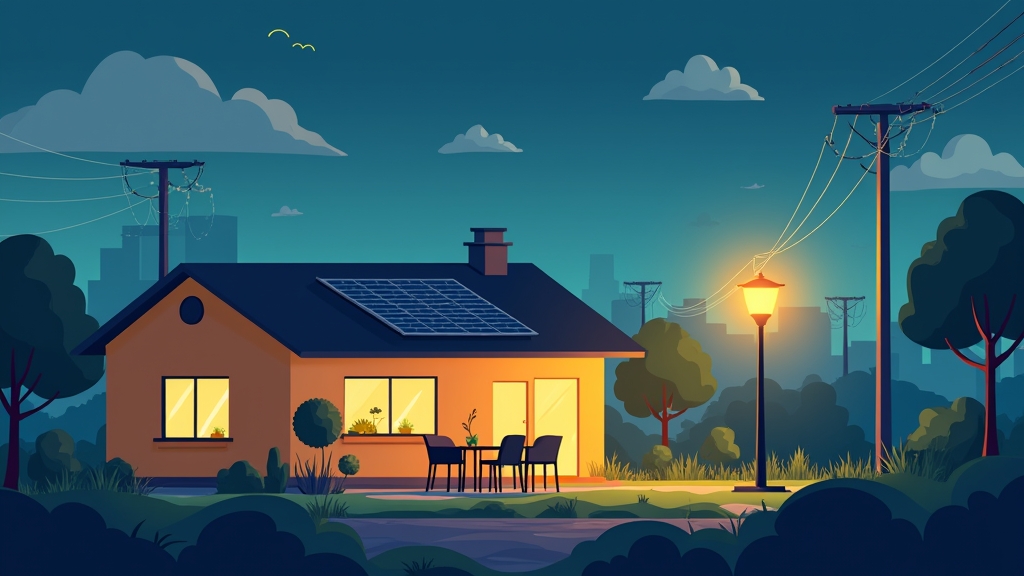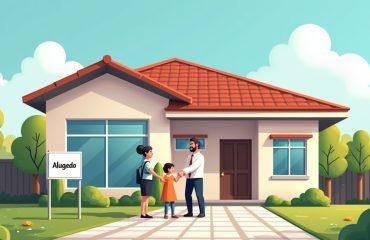advertising
With the frequent increase in electricity prices, many Brazilians are looking for strategies to reduce the cost of their electricity bills. Among the various options available, one that deserves to be highlighted is the Social Electricity Tariff. This benefit is aimed at low-income families and offers a significant discount on electricity bills.
In this article, we'll discuss various ways to reduce your energy bill and explore in detail how the Social Tariff can be an effective solution.
Understand Your Energy Consumption
The first step to reducing electricity costs is to understand how you are consuming electricity in your home. Many of us don't realize how much some appliances consume until we see the impact at the end of the month. To do this, it is essential to carry out an energy audit.
Identify the appliances that consume the most energy, such as refrigerators, air conditioners, electric showers, among others. Use energy meters to obtain accurate consumption data.
Also, pay attention to how long you use each appliance and consider replacing old, inefficient ones with more economical models. The National Electricity Conservation Program (Procel) label can guide your choices, highlighting appliances that consume less energy.
Finally, adopt daily habits that reduce consumption, such as turning off lights when you leave a room, unplugging appliances when they are not in use and opting for LED bulbs, which are more efficient and longer-lasting.
Optimize the use of household appliances
One of the biggest villains on the electricity bill is household appliances. Fortunately, some practices can help optimize their use and reduce energy consumption.
In the case of air conditioning, always keep the filter clean and avoid very low temperatures. Setting the thermostat to a comfortable temperature, usually around 24°C, can make a big difference to consumption.
The fridge also deserves special attention. Don't leave the door open for too long and adjust the thermostat accordingly. Also, avoid putting hot food directly into the fridge, as this increases energy consumption to keep the internal temperature stable.
When it comes to lighting, swapping incandescent and fluorescent bulbs for LEDs can result in significant savings. LED bulbs consume up to 80% less energy and have a much longer lifespan.
Small changes in the use of household appliances, such as irons and washing machines, can also contribute to savings. Use these appliances only when necessary and preferably at off-peak times.
Review Your Dealership Contract
Another important step towards reducing your electricity bill is to review your contract with the energy provider. Knowing the details of your contract can reveal opportunities for savings.
In many cases, consumers are not aware of the different tariff options available. Utilities offer differentiated tariffs that can be more advantageous depending on the consumption profile, such as the white tariff, which varies according to the time of use. Analyzing whether switching to this modality is beneficial can result in savings.
Also, check for billing errors. Regularly monitoring your energy bill and comparing it with your consumption history can help identify discrepancies that can be corrected.
Another point to consider is the possibility of adopting alternative energy sources, such as solar. Although the initial investment is significant, solar energy systems can drastically reduce your dependence on the electricity grid and, consequently, your electricity bill.
The Social Electricity Tariff
The Social Electricity Tariff is a benefit granted by the federal government that offers significant discounts on electricity bills for low-income families. This program aims to ensure that all Brazilians have access to electricity, easing the financial burden on those who need it most.
To be eligible for the Social Tariff, a family must be registered in the Federal Government's Single Registry for Social Programs (CadÚnico) and have a monthly per capita income of less than or equal to half the minimum wage. Families that have a member receiving the Continuous Cash Benefit (BPC) are also eligible.
The discount offered varies according to monthly consumption. For the first 30 kWh consumed, the discount is 65%. Between 31 kWh and 100 kWh, the discount is 40%, and between 101 kWh and 220 kWh, the discount is 10%. Above 220 kWh, no discount is applied.
To apply for the Social Tariff, you need to contact the electricity provider in your region and provide the necessary documents, such as your Social Identification Number (NIS) and CPF.
How to apply for the Social Tariff
The process for applying for the Social Electricity Tariff is relatively simple, but requires attention to detail to ensure that all the requirements are met.
First of all, make sure that all the data in the Unified Registry is up to date. Registration must be updated every two years or when there are changes in family composition or income.
Then contact the electricity company responsible for supplying electricity in your area. Inform them of your interest in joining the Social Tariff and provide the Social Identification Number (NIS) and other documents requested by the utility, such as ID, CPF and proof of residence.
The utility company will evaluate the documents and, if all the conditions are met, the discount will be applied automatically to the next electricity bills.
If you have any questions during the process, most dealerships offer customer service channels that can help, either by phone, in person or via the internet.

Benefits and Impacts of the Social Tariff
The Social Electricity Tariff not only relieves the budget of low-income families, but also has a significant impact on their quality of life.
By spending less on their electricity bills, families can allocate resources to other basic needs, such as food, health and education. This contributes to an overall improvement in the quality of life and well-being of the families who benefit.
In addition, the Social Tariff can encourage more conscious use of energy. As the benefit is staggered according to consumption, there is an incentive for families to keep their energy spending within the discount bands, promoting more sustainable consumption habits.
Finally, by guaranteeing affordable access to electricity, the program reduces social inequalities and promotes inclusion, allowing all Brazilians to enjoy the benefits that electrification brings.
Conclusion
Reducing your electricity bill is an achievable goal by adopting a few simple practices and taking advantage of benefits such as the Social Electricity Tariff. Understanding energy consumption, optimizing the use of appliances, reviewing contracts and taking advantage of available discounts are all steps that can result in significant savings.
The Social Tariff represents an important support tool for low-income families, offering financial relief and contributing to social inclusion. If you meet the eligibility criteria, don't miss out on this benefit and enjoy all the advantages it can offer.
FAQ
1. What is the Social Electricity Tariff?
It is a program that offers discounts on electricity bills for low-income families registered with the CadÚnico or receiving the BPC.
2. Who is entitled to the Social Tariff?
Families with a per capita income of up to half the minimum wage or who have a member receiving BPC.
3. How do I apply for the Social Tariff?
Update your CadÚnico registration and contact your energy provider with the necessary documents.
4. What is the discount offered by the Social Tariff?
The discount varies from 10% to 65% depending on monthly energy consumption.
5. Is the discount applied automatically?
Yes, after approval and inclusion in the program, the discount is automatically applied to invoices.
6. Can I lose my benefit?
Yes, if you don't keep your registration up to date or if you no longer meet the eligibility criteria.
7. Does the Social Tariff cover all types of consumption?
No, there are consumption limits for which the discount is applied. Above 220 kWh, there is no discount.
8. How do I know if I'm on CadÚnico?
Check at the Social Assistance Reference Center (CRAS) or through the My CadÚnico application.
9. Can I apply for the Social Tariff online?
Some dealerships allow you to apply online, check with yours to confirm.
10. What documents do I need to apply?
Social Identification Number (NIS), ID, CPF and proof of residence.
11. What is the Unified Registry?
A government data system that gathers information on low-income families for inclusion in social programs.
12. Which concessionaires offer the Social Tariff?
All electricity utilities must offer the Social Tariff.
13. Is there an income limit for CadÚnico?
Yes, usually up to half the minimum wage per capita, but it can vary for some programs.
14. Is the Social Tariff for life?
No, you have to keep your registration up to date and meet the eligibility criteria on an ongoing basis.
15. Where can I ask questions about the Social Tariff?
Contact your energy provider or the nearest CRAS for detailed advice.



